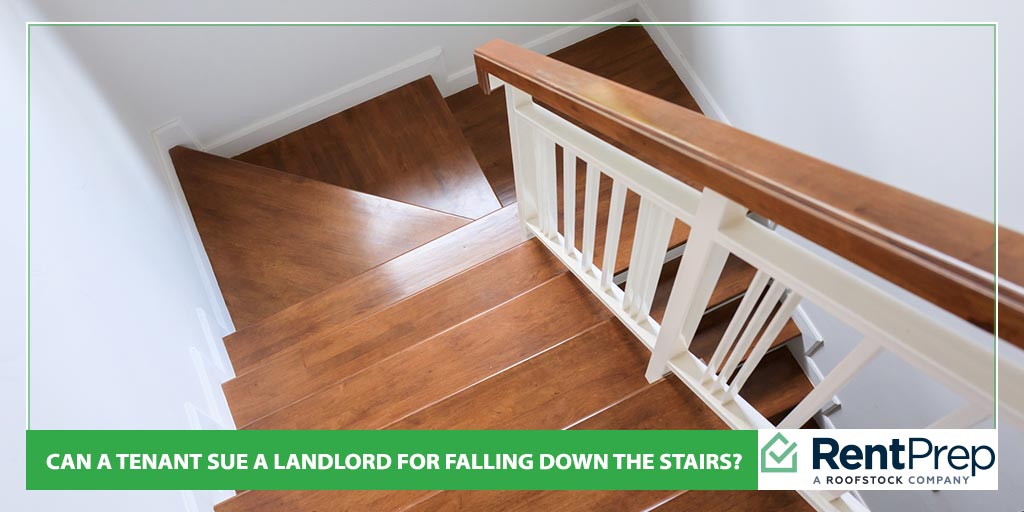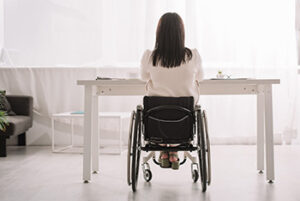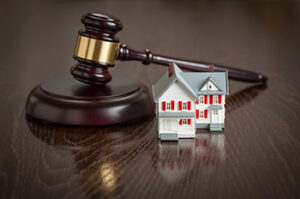
A landlord’s responsibility is to ensure that visitors and residents in rental properties are residing in a safe and hazard-free place. Some of the most common injuries across the country are those that occur from slip and fall accidents.
When a floor surface is not adequately cleaned, installed, or cared for, it may result in a slip and fall that can cause someone to get injured, and launch a lawsuit that landlords can’t avoid.
While maintaining flooring surfaces in single family homes is important, the liability for slip and fall accidents in multi-unit properties with common areas is much greater. The advice in this guide is primarily aimed at landlords with multi-unit properties, but landlords of single family home rentals will also find valuable information here for minimizing slip and fall risks.
What is a Slip and Fall Exactly?
Slip and fall accidents, or slip, trip and falls, take place frequently, with more than 8 million visits to emergency rooms across the country for slip and fall accidents every year. Broken bones, dislocated joints, head injuries, sprained muscles, head injuries and more can all result from a slip and fall on a rental property.
There are a number of reasons why people slip and fall in rental properties, and many of them can be prevented with a proactive approach by landlords to minimize hazards on the property.
Here are a few common causes of slip and fall accidents:
- Contamination of the floor surface, like water, dust, construction debris, sand, etc.
- Poor condition of flooring, like worn carpet or warped linoleum
- Transitioning from one surface to another, like from carpeted halls to tile lobby
- Physical limitations in mobility, such as those due to old age, disability or inebriation
- Running, jumping or playing around, such as by the pool area or playing on stairs
- Not paying attention, such as looking at a phone or carrying too many groceries at once
- Poor footwear, such as worn or slippery soles, high heels, or loose shoes like flip-flops
While most people understand that having some kind of substance on the floor, like water, will cause a slip and fall accident, the other reasons are less obvious but can contribute just as much to an accident.
Recognizing these dangers and doing everything possible to minimize them is important for landlords to do.
Areas With High Risk for Slip and Falls

In a multi-unit complex, there are several areas that pose a high risk for resident slip and fall accidents, so landlords, property managers and maintenance personnel should regularly check for hazards.
Here are some of the most common areas for slip and fall accidents:
- Lobby entrance
- Stairs and ramps
- Food prep areas
- Restrooms
- Pool decks
- Areas with dripping condensation or leaking pipes
- Anywhere the flooring changes in texture and level
In order to prevent these areas from becoming a hazard, landlords should inspect them carefully and decide whether any action is necessary to keep residents and guests safe. Action might be considered as better cleaning, repairing, replacing or otherwise improving the flooring conditions in these areas and throughout the property.
Slip and Fall Litigation
When a resident or guest is injured as a result of a slip and fall, it’s possible that they will start litigation against the landlord. Not only will the landlord be named in the lawsuit, but sometimes the cleaning staff, maintenance person, and even the manufacturer or installer of the flooring is included.
A successful lawsuit could be financially devastating to a landlord, so it’s important to focus on prevention and preparation in order to reduce the risk of accidents, and therefore avoid litigation.
Are Landlords Responsible for Slipping Hazards?

For a tenant or guest to win a slip and fall lawsuit, they would have to prove negligence, or that the landlord knew of the potential hazard and did nothing to prevent it.
Examples of landlord negligence might include a scenario where every time the lobby plants are watered, the runoff creates puddles on the floor, and the landlord or the employees don’t do anything to prevent the hazard.
Another example might be that there is a carpet seam that is coming apart in the hallway and although maintenance has been notified, there is no warning signage or attempts to repair the carpet.
To prevent slip and fall accidents on a rental property means that landlords need to identify any hazards that may cause problems, and come up with a plan to minimize the risks. There are several things landlords can do for slip and fall prevention. In order to minimize the impact of a lawsuit, landlords can engage in preparation by ensuring that they keep good records and have a working maintenance plan in place. Proper preparation means that a landlord is ready to defend themselves in the event of a lawsuit.
What Can Landlords Do?
If landlords take a proactive approach to minimize slip and fall hazards throughout the rental property, the less likely it is that tenants will have an accident and even if they do, the landlord is in a good position to show due diligence in minimizing risks of slip and falls.
There are 8 things that landlords can do in order to prevent slip and fall accidents from happening as well as aid in preparing a defense in the event of litigation from a slip and fall.
- Appropriate floor surface: Making sure the right flooring is being used for each area of the property is important. For example, slippery tiles in the pool area is not nearly as safe or effective at preventing slip and falls as textured concrete. Making sure that each flooring surface is appropriate for the area it is intended is the best place to start.
- Proper installation: Whether its carpet, tile, laminate or resilient flooring, proper installation is a big part of ensuring a safe walkway. For example, poorly installed carpeting can ripple or wear unevenly, boosting the risk of tripping. Uneven tiles can create an uneven surface that can catch footwear.
- Regular inspections: Whether it’s done by the landlord, property manager or maintenance worker, there should be a regular inspection of the property’s flooring surfaces. Frequently, someone needs to walk the property and look for slip and fall dangers, such as poor lighting on stairs, blocked areas, torn carpeting, curling stair treads, wrinkled floor mats, broken tiles and so forth. Each inspection should be documented and filed away in the event it is needed for a lawsuit defense.
- Proper maintenance: Most people think that any old cleaning plan will do for all kinds of flooring, but each type of flooring requires special attention. Overuse of chemical products can cause floor surfaces to become even more slippery or sticky, while proper cleaning products can actually increase the slip resistance of certain types of flooring.
- Regular maintenance: A daily and weekly floor maintenance program will ensure that flooring surfaces are kept in top condition. Dust mopping, wet mopping, vacuuming and more should be done on a regular basis with the best products, tools, and equipment. Also, the floor cleaning schedule should take place during off hours where there is less traffic to worry about.
- Proper signage: Maintenance workers should have the proper signs to alert people as to what is going on. If the floors are newly mopped, one or more “Wet Floor” signs should be set out. Similarly, clearly posted warnings and caution notices in hazardous areas, like the pool deck, are necessary to remind tenants about the risks.
- Effective spill plan: In the event of a spill or other instance of a foreign substance on the floor, landlords and maintenance workers should have an effective plan in place to take care of unexpected spills. Spills should be quickly marked with signs while the proper equipment is retrieved to clean it up.
- Proper documentation: In order to ensure that all the proper floor cleaning, maintenance, and inspections are taking place, landlords should insist on and keep files of regular documentation. This can be a checklist or a short written report. Documenting when each area is being cleaned, what cleaning products are used, notes about irregularities, accident reports, outside maintenance and repair notes, and more can really help during a lawsuit to show that every care was taken to minimize the risk of slip and falls.
With all these steps in place, landlords can demonstrate that they have actively implemented an effective strategy to reduce the risk of slip and fall accidents in every way possible. Even the best plan cannot prevent accidents, as footwear, attentiveness, and behavior on the part of the resident can cause a slip, trip or fall on the best of surfaces.
However, updated regular records of the property’s slip and fall strategies can reduce the landlord’s liability greatly in the event of an accident.
Getting Professional Help
For landlords who are not sure of where to begin in implementing a flooring maintenance plan, there are certified and licensed professionals that can help.
Trained flooring inspectors specialize in analyzing different types of flooring and evaluating surfaces for risks. Flooring inspectors can work with landlords, property managers and maintenance workers on everything from verifying proper flooring, confirming proper cleaning techniques and products, and offer suggestions for high-risk areas.
Flooring inspectors will also check the installations were done properly and provide a written report of their findings and recommendations. Having a certified flooring inspector come out regularly to the rental property and provide expert reports is another way landlords can show they are looking out for their tenants and being proactive in preventing injuries due to slip and falls.
Being a landlord is a big responsibility, and keeping tenants and guests safe from accidents via an effective floor safety plan is the best way to keep everyone healthy and happy.

